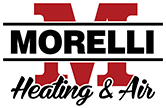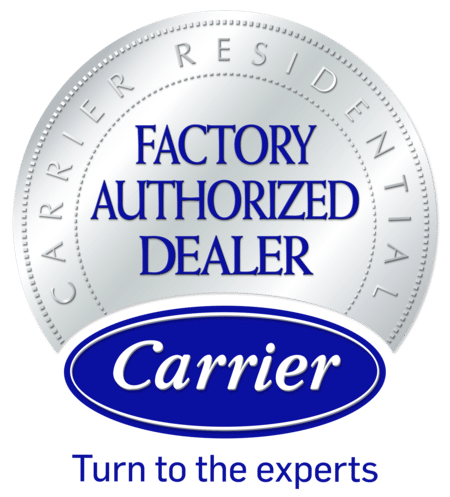Indoor air quality is crucial for maintaining a healthy living environment. With many of us spending most of our time indoors, especially in our homes, the quality of the air we breathe can have a significant impact on our health and well-being. Unfortunately, various indoor air pollutants can accumulate in our homes without us even realizing it. In this blog, we’ll discuss the most common indoor air pollutants, how to eliminate them, and why it’s important to take action.
What Are Indoor Air Pollutants?
Indoor air pollutants are contaminants found in the air inside buildings and homes. These pollutants can come from various sources such as cleaning products, building materials, and outdoor air that seeps inside. Unlike outdoor pollution, indoor air quality is often overlooked, but it can be much more concentrated and harmful if left unchecked.
Poor indoor air quality can lead to a range of health issues, from allergies and asthma to more serious respiratory problems. Understanding the common pollutants and taking steps to reduce them can make a significant difference in your home’s air quality.
Common Indoor Air Pollutants
Here are some of the most common indoor air pollutants you may find in your home:
1. Volatile Organic Compounds (VOCs)
VOCs are chemicals that are released into the air from everyday household items such as paints, cleaning products, furniture, and even some air fresheners. Common VOCs include formaldehyde, benzene, and toluene, all of which can irritate the respiratory system and cause other health problems.
2. Mold and Mildew
Mold and mildew thrive in damp, humid environments, making bathrooms, basements, and kitchens prime spots for growth. Mold spores can become airborne and cause respiratory issues, allergies, and asthma attacks. Long-term exposure can lead to more severe health problems.
3. Particulate Matter (PM)
Particulate matter refers to tiny particles like dust, dirt, and soot that can float through the air. Sources of PM include tobacco smoke, cooking, burning candles, and even outdoor pollution that enters the home. Fine particulate matter can be inhaled deeply into the lungs, leading to respiratory and cardiovascular issues.
4. Carbon Monoxide (CO)
Carbon monoxide is a colorless, odorless gas that can be deadly at high levels. It’s often produced by malfunctioning gas appliances, wood-burning stoves, or poorly ventilated fireplaces. Even low levels of carbon monoxide exposure can cause headaches, dizziness, and fatigue, while higher levels can be life-threatening.
5. Radon
Radon is a naturally occurring radioactive gas that can enter homes through cracks in the foundation or walls. It’s the second leading cause of lung cancer after smoking. Since radon is invisible and odorless, testing your home is the only way to know if you’re at risk.
How to Eliminate Indoor Air Pollutants
Thankfully, there are effective ways to reduce or eliminate indoor air pollutants and improve your home’s air quality. Here’s how you can tackle some of the most common culprits:
- Ventilation: Proper ventilation is key to preventing pollutants from building up indoors. Make sure to open windows regularly to allow fresh air in, and use exhaust fans in kitchens and bathrooms to reduce moisture and cooking fumes.
- Air Purifiers: High-quality air purifiers with HEPA filters can capture a wide range of indoor air pollutants, including dust, pet dander, and particulate matter. Some purifiers also come with activated carbon filters, which help reduce VOCs and odors.
- Use Non-Toxic Products: Opt for natural cleaning products and low-VOC paints and furniture to minimize the release of harmful chemicals in your home.
- Dehumidifiers: In areas prone to moisture, like bathrooms and basements, use a dehumidifier to keep humidity levels low and prevent mold growth. Aim to keep humidity levels between 30-50% for optimal air quality.
- Radon Mitigation: If testing reveals radon levels in your home, a professional can install a radon mitigation system to safely reduce the gas and protect your household.
- Regular Maintenance: Ensure that heating, cooling, and ventilation systems are regularly serviced to prevent the buildup of pollutants like carbon monoxide. Also, test your carbon monoxide detectors to ensure they are functioning properly.
DIY vs. Professional Help
While some indoor air quality improvements can be done on your own, such as using air purifiers or controlling moisture levels, other issues may require professional help. For example:
- Mold Remediation: If mold growth is extensive, or if it’s in hard-to-reach areas, professional mold remediation may be necessary to ensure thorough removal and prevent it from returning.
- Radon Testing and Mitigation: Testing for radon is best done by professionals, especially since mitigation systems must be installed correctly to be effective.
- HVAC System Cleaning: Your HVAC system can circulate dust, mold spores, and other pollutants throughout your home if not cleaned and maintained properly. Hiring a professional to clean your ducts and ensure your system is running efficiently can make a huge difference in your air quality.
Creating a Long-Term Indoor Air Quality Plan
Eliminating pollutants in the short term is a great first step, but maintaining good indoor air quality requires a long-term plan. Consider implementing the following strategies:
- Regular Testing: Conduct periodic tests for radon and carbon monoxide, and check humidity levels to prevent mold growth.
- Filter Replacements: Change air filters and air purifiers in your HVAC system according to manufacturer recommendations.
- Routine Cleaning: Dust and vacuum your home regularly to prevent the buildup of particulate matter.
- Annual Inspections: Schedule yearly inspections of your HVAC system, fireplaces, and gas appliances to catch any potential issues early.
By following these practices, you can keep your home’s air clean and safe for the long haul.
Indoor air quality plays a significant role in your overall health and well-being. Understanding the common indoor air pollutants and taking steps to eliminate them can create a healthier environment for you and your family. Whether it’s using air purifiers, improving ventilation, or seeking professional help for more serious issues like radon or mold, taking action is crucial for long-term health.
If you’re concerned about the air quality in your home and want professional help, contact Morelli Heating and Air Conditioning today. Our team of experts can assess your indoor air quality and provide solutions tailored to your needs. Breathe easier with Morelli by your side!









Excellent! Please Rate us 5-stars
...and leave a helpful review.
Would you recommend Morelli Heating and Air?